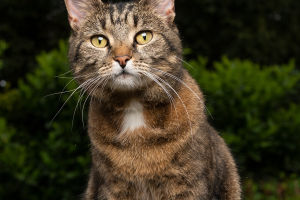Dragonflies are beautiful animals because of their small and delicate wings and colorful bodies. Animals have their own habits, for example, dragonflies like to use their tails to point water?
This is because the larvae of dragonflies need to live a long crawling life in water. In order to reproduce, female dragonflies use their tails to point water to discharge fertilized eggs into the water and attach them to the water plants in order to hatch the larvae.
After the eggs are discharged, the larvae slowly hatch on the water plants, and this "infancy" to the stage of adulthood in place is called "water insect". Water insects to spend a long time in the water crawling life.
Dragonflies live in farmland waters, mountain waters, reservoir waters and other environments with moist air. Because there are many aquatic plants and plankton in these environments, which can provide abundant food for dragonflies, and their larvae also need to develop in water, so the humid environment is conducive to dragonflies' reproduction and growth.
About 300 million years ago, the first winged insects began to appear, including dragonflies, and in fact these insects were the first animals to actually learn to fly.
This is more than 70 million years before we conventionally think of pterosaurs (the first vertebrates to learn to fly), and 150 million years before the birds that evolved from the dinosaurs that followed.
In terms of emergence time, dragonflies had more time to optimize their flying abilities, so it's no surprise that they became the kings of the flying world.
If you've ever looked at a dragonfly's head, you'll notice that almost their entire head is covered with eyes.
Their compound eyes have 30,000 small planes, each carrying information about the insect's surroundings, which gives them near 360-degree vision.
Dragonflies, like many insects, spend most of their lives underwater, usually for a year or two (some live underwater for up to six years), and undergo 17 molts before coming ashore to become a good "pilot".
In the water, dragonfly larvae mainly trade speed for success, and their diet includes insect larvae, tadpoles, and even their own kind, and, as you might imagine, fish are also on the menu.
Not only that, but one thing dragonfly larvae can do that is difficult for other insects is that they can survive and feed in seawater, even in waters that are more salty than seawater.
If we compare humans and insects in numbers, each human can correspond to 200 million insects, but they only conquer the land and hardly make their presence felt in the ocean, while dragonflies seem to have been unsatisfied with the land.


